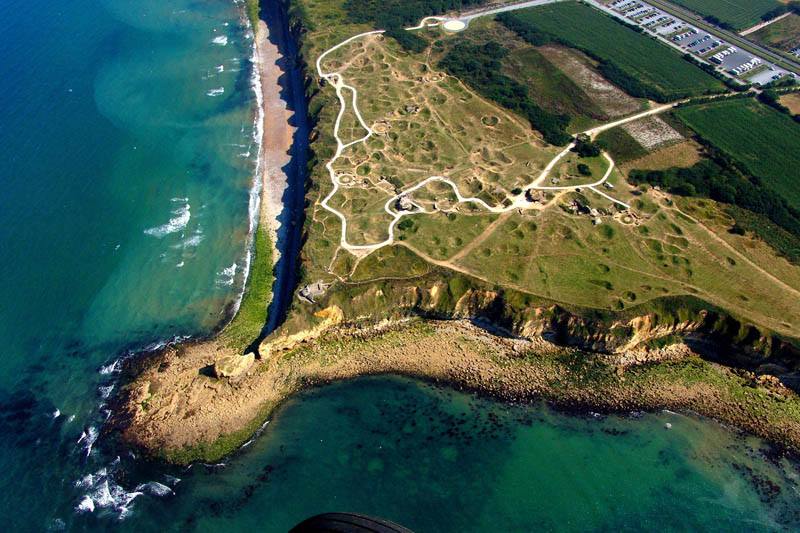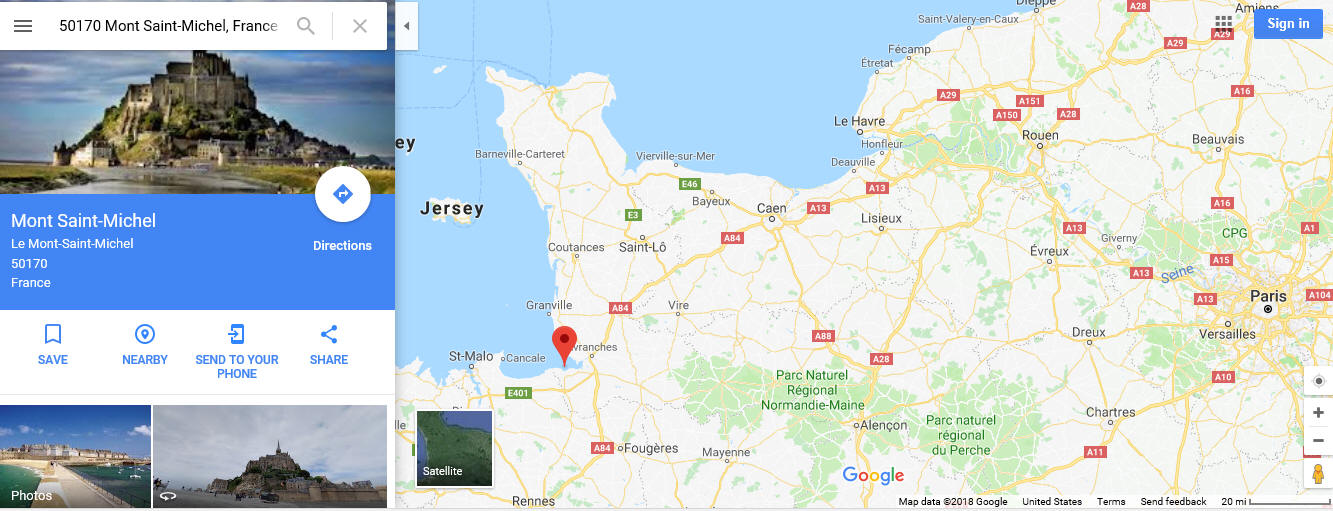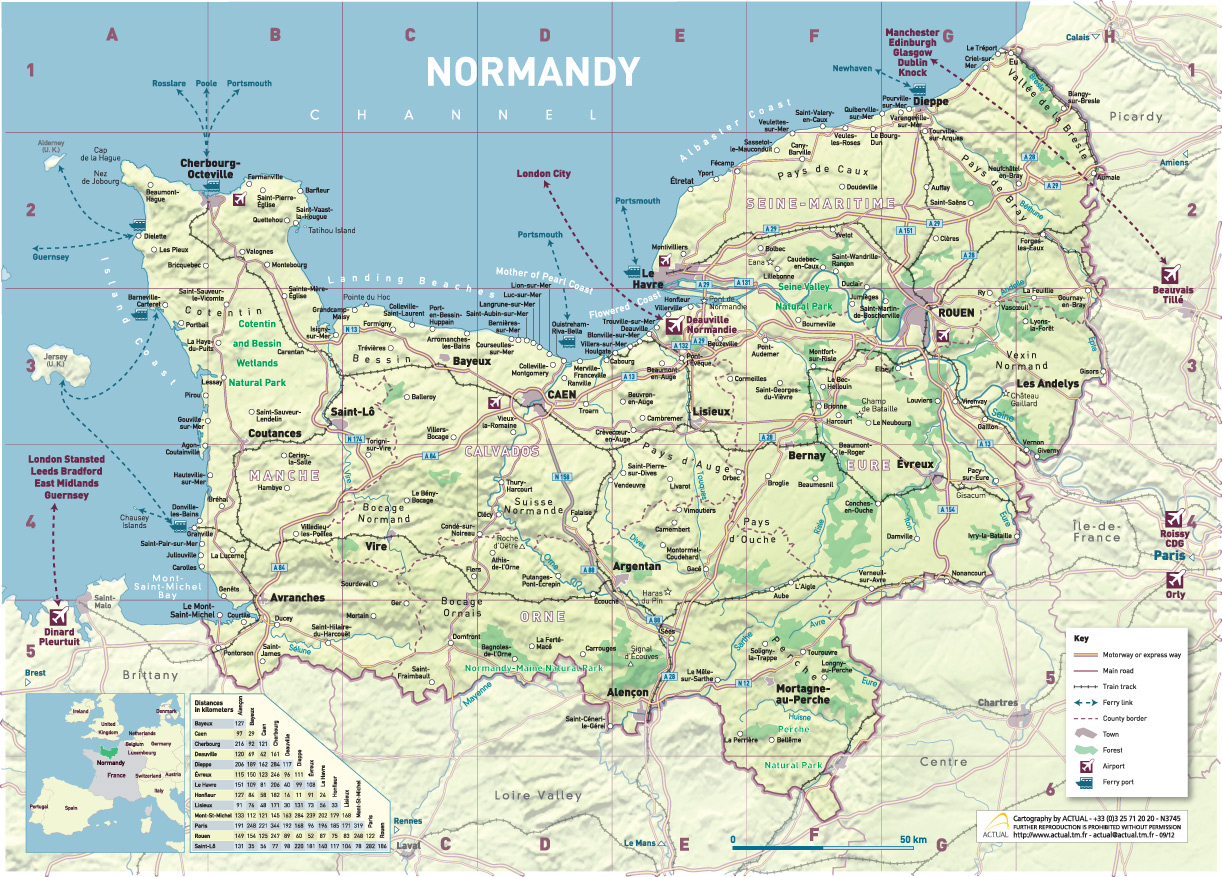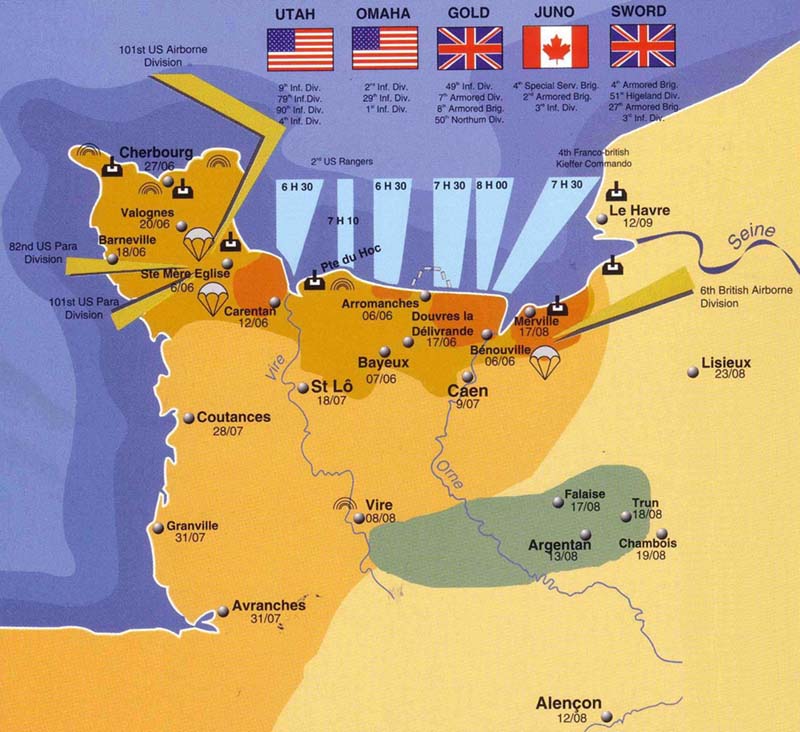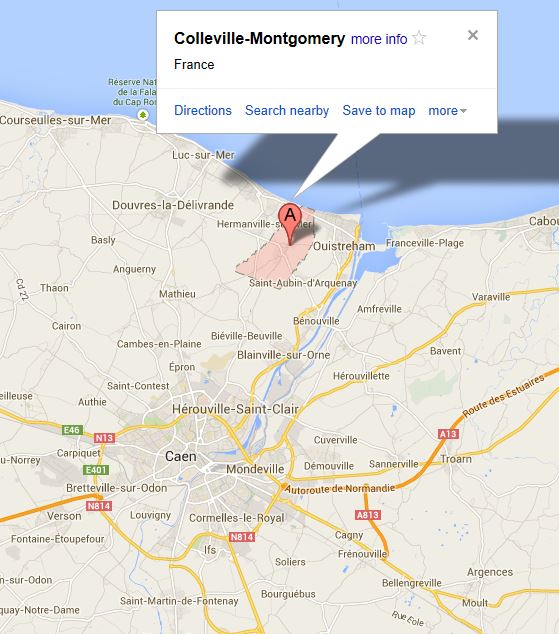How to travel to the D-Day Beaches in Normandy from Paris
Commemorate D-Day Where it All Began
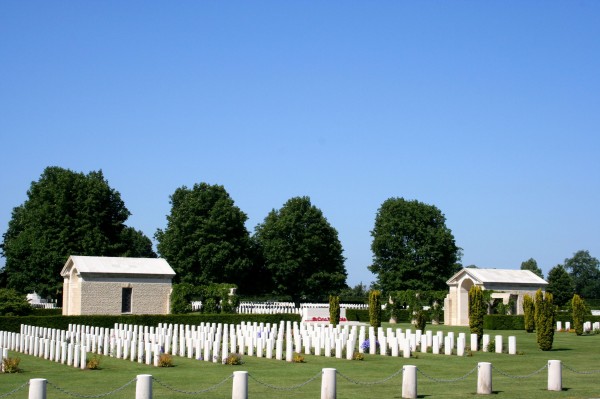
Bayeux British military cemetery, the burial place of almost 4000 soldiers who took part in the Normandy Landings in 1944.
British War Cemetery
The peaceful Bayeux War Cemetery is the largest of the 18 Commonwealth military cemeteries in Normandy. It contains 4,868 graves of soldiers from the UK and 10 other countries (including Germany, in contrast to the American cemetery at Colleville-sur-Mer). Many of the soldiers buried here were never identified, and the headstones are simply marked 'A Soldier Known Unto God'. The bodies of 1,807 other Commonwealth soldiers were never found, and are commemorated on the memorial across the main road.
______________________________________
(Map Below)
"A" Colleville sur mer American cemetary
The Normandy American Cemetery and Memorial is a World War II cemetery and
memorial in Colleville-sur-Mer, Normandy, France, that honors American soldiers who died in
Europe during World War II.
The cemetery is located on a bluff overlooking Omaha Beach (one of the landing beaches of the
Normandy Invasion) and the English Channel. It covers 172 acres (70 ha), and contains the
remains of 9,387 American military dead, most of whom were killed during the invasion of Normandy
and ensuing military operations in World War II. Included are graves of Army Air Corps crews shot
down over France as early as 1942.
Pointe du hoc landing near Grandcamp-Maisy
Bayeux - England (and others) cemetary
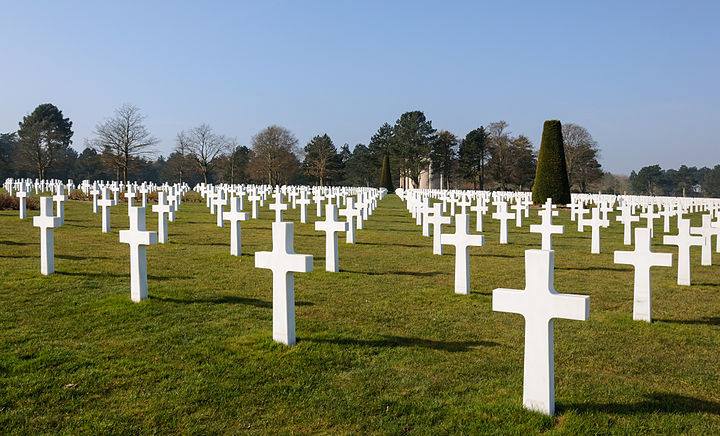
About
Normandy American Cemetery and Memorial
History
On June 8, 1944, the
U.S. First Army
established the temporary cemetery, the first American cemetery on European soil
in World War II. After the war, the present-day cemetery was established a short
distance to the east of the original site.
Like all other overseas American cemeteries in France for World War I and II,
France has granted the United States a special, perpetual
concession to the land
occupied by the cemetery, free of any charge or any tax. This cemetery is
managed by the American government, under Congressional acts that provide yearly
financial support for maintaining them, with most military and civil personnel
employed abroad. The
U.S. flag
flies over these granted soils.
The cemetery is located on a bluff overlooking
Omaha Beach (one of the
landing beaches of the
Normandy Invasion) and
the
English Channel. It
covers 172
acres (70
ha),
and contains the remains of 9,387 American military dead, most of whom were
killed during the invasion of Normandy and ensuing military operations in World
War II. Included are graves of Army Air Corps crews shot down over France as
early as 1942.
Only some of the soldiers who died overseas are buried in the overseas American
military cemeteries. When it came time for a permanent burial, the next of kin
eligible to make decisions were asked if they wanted their loved ones
repatriated for permanent burial in the U.S., or interred at the closest
overseas cemetery.
La Cambe is a military war grave cemetery, located close to Bayeux, France. Presently containing in excess of 21,000
German military personnel of World War II, it is maintained and managed by the German War Graves Commission.
Orglandes German war cemetery
Orglandes War Cemetery is a German World War II cemetery in Normandy, France. It is located on the northern edge
of the village of Orglandes, about 25 km west of Bayeux. The burials come from summer 1944, immediately following
D-Day and the Battle of Normandy.
What is D-day?
On June 6, 1944, nearly 160,000 Allied troops landed along a 50-mile stretch of French coastline to fight Nazi Germany. The cost was high, with more than 9,000 soldiers wounded or killed. By day’s end, the Allies gained a foothold in Normandy, and more than 100,000 soldiers began the march across Europe to defeat Hitler and eventually win the war. This short description clearly cannot do justice to the sacrifice of these brave young men.
To see where this act of courage took place nearly 70 years ago is for many, a dream fulfilled. Getting here is easy, thanks to France’s highly developed railway network, and is a very doable day trip from Paris.
Visit Normandy for D-day celebrations
The beaches of Normandy will commemorate this 68th anniversary with a full slate of events from June 1-June 8, including:
-
Reconstruction of US military camps in Sainte Mère Eglise and Sainte Marie du Mont Utah Beach
-
Reconstruction of the advance of 101 Airborne – participants in uniform set off at 9h00 in military vehicles
-
Parachute jump over marais de La Fière
-
Photo exhibition “Our Dear Deceased US Veterans” in Amfreville, Salle des fêtes
-
“The Longest Night”: On the 50th anniversary of the film “The Longest Day.” Meetings with local extras of the shooting of the movie in Ste Mère Eglise and in other places.

Calvados Pegasus bridge
To the Allied Beaches Memorial Museum in Caen:
If your plans include a visit to the Allied beaches, Memorial Museum or you plan to rent a car and explore on your own then you’ll want to select Caen as your destination.
The award-winning Caen Memorial Museum is regarded as the best World War II museum in France and only 15 minutes away from the D-Day beaches. Thanks to this proximity, the museum runs guided tours. Also on display are exhibits of other failures and triumphs of peace, such as the Berlin Wall and was the first museum outside of the United States to display artifacts from 9/11.

Calvados Notre-Dame cathedral in Bayeux mixes features of romanesque and gothic architecture. It was largely constructed in the 13th century.
The Beauty of Bayeux
It was here, in 1944, that General Charles de Gaulle made his first major speech in which he made clear that France sided with the Allies. The buildings in Bayeux were virtually untouched during the Battle of Normandy, sparing the city’s architectural gems, notably the Cathedral of Notre-Dame. The church is a national monument of France, consecrated in 1077.
The Cathedral was also the original home of the famed Bayeux Tapestries. Woven in 1066 by Reine Mathilde, wife of William the Conqueror to commemorate events in the Norman Conquest of England, it is one of the world’s oldest tapestries still intact. It’s such a tourist attraction, that Bayeux created a museum just for this one incredible piece of art – the Musée de la Tapisserie.
Whether in Paris on June 6 or visiting at another time, the beaches of Normandy are a day trip not to be missed. Its history has shaped our future, and for that, we are ever grateful.

Cherbourg had been declared a Fortress by Hitler.
Some of the heaviest batteries can be found in this sector, it can be argued that Hamburg was the biggest true batterie in France.
The Germans never really utilised Cherbourg to its full potential, two flotillas of S-Boates being the extent of its naval power here.
At the foot of each page you will find listed the Bunkers and Armaments of each site where known
Honfleur
